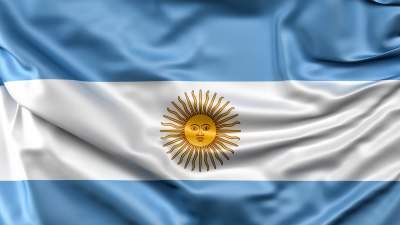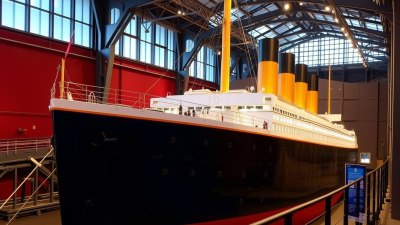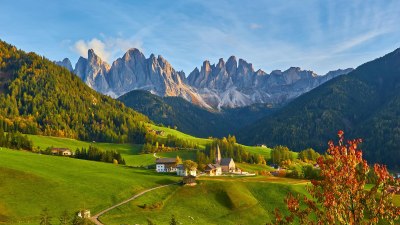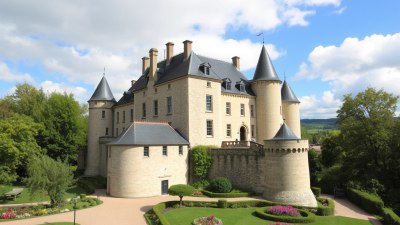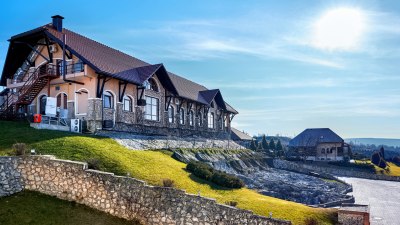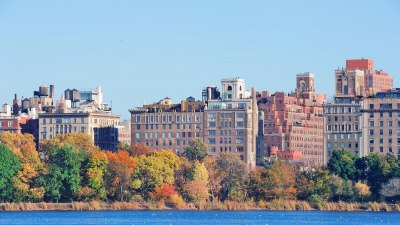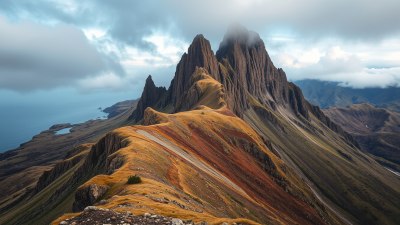Podgorica's Lake Skadar: Exploring Montenegrin Nature
Discover the beauty of Lake Skadar, Montenegro's natural gem, and its diverse ecosystem.
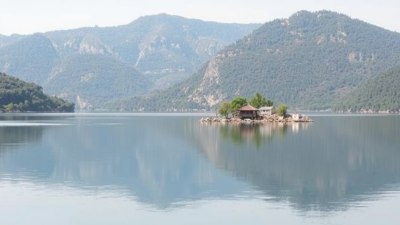
Image created with Flux Schnell
Lake Skadar, situated on the border between Montenegro and Albania, is the largest lake in the Balkans. Known for its stunning natural beauty, this freshwater lake is a key component of Montenegro's rich biodiversity and offers a unique glimpse into the region's flora and fauna. With vast wetlands, abundant wildlife, and a picturesque backdrop of mountains, Lake Skadar is a must-visit for nature lovers and adventure seekers alike.
The lake covers an area of approximately 369 square kilometers, with varying water levels depending on the season. The diverse habitats around the lake support a wide range of plants and animals, making it a vital ecological zone and a designated national park. The extraordinary landscape is characterized by tranquil waters, lush vegetation, and a myriad of islands, providing a serene environment for visitors.
Geography and Climate
Lake Skadar is located in a karst region, surrounded by rugged mountains and hills that create a stunning backdrop. The climate around the lake is Mediterranean, characterized by hot, dry summers and mild, wet winters. This climate supports a diverse ecosystem, with a mix of subtropical and temperate species thriving in the area.
The lake itself is divided into two parts: the northern part lies in Montenegro, while the southern part extends into Albania. This unique geographic feature contributes to the rich cultural and historical significance of the area, as it has been a shared resource for centuries. Lake Skadar is not only important for its biodiversity but also for its role in local economies through fishing, tourism, and agriculture.
Biodiversity and Wildlife
One of the main attractions of Lake Skadar is its incredible biodiversity. The lake is home to over 260 bird species, including the rare Dalmatian pelican, which is one of the reasons why the area was designated a national park. The wetlands surrounding the lake serve as a crucial breeding ground for many birds, making it a popular destination for birdwatchers.
In addition to its avian inhabitants, Lake Skadar is also home to a variety of fish species, including carp, bleak, and eel, which contribute to the local fishing economy. The rich underwater ecosystem supports a vibrant community of aquatic plants and organisms, further enhancing the lake's ecological significance. The surrounding hills and forests offer habitats for land mammals such as deer, foxes, and the elusive otter, adding to the richness of wildlife visitors can encounter.
Activities and Attractions
Lake Skadar National Park offers a multitude of activities for visitors, making it an ideal destination for outdoor enthusiasts. Hiking trails wind through the surrounding hills, providing breathtaking views of the lake and its diverse landscapes. Many trails can be explored either on foot or by bicycle, allowing visitors to immerse themselves in the natural beauty of the area.
For those looking to experience the lake itself, boat tours are a popular option. Various local companies offer guided tours that take visitors through the tranquil waters of the lake, providing an opportunity to observe the diverse wildlife and stunning scenery. Kayaking and canoeing are also excellent ways to explore the lake at a more leisurely pace, allowing for a close-up experience with nature.
Cultural Significance
Lake Skadar is steeped in history and culture, with numerous settlements and historical landmarks scattered around its shores. The town of Virpazar, located on the lake's northern shore, is a charming village that offers insight into the region's rich cultural heritage. Visitors can explore the old stone bridges and traditional architecture that reflect the area’s history as an important trade route.
The local cuisine is another highlight of the region, with restaurants serving traditional Montenegrin dishes made from fresh ingredients sourced from the surrounding countryside. Dishes featuring fish from the lake, such as trout and carp, are popular among visitors, alongside local wines that pair perfectly with the savory flavors of the region. This culinary experience provides a taste of local culture that enhances the overall visit.
Conservation Efforts
Given its ecological importance, ongoing conservation efforts are crucial to preserving Lake Skadar's unique environment. Initiatives aimed at protecting the lake's biodiversity and natural resources are supported by local and international organizations. These efforts focus on increasing public awareness about the importance of preserving the lake and its surroundings for future generations.
Visitors are encouraged to practice responsible tourism while visiting the park. Simple actions, such as staying on designated trails, observing wildlife from a distance, and reducing plastic waste, contribute significantly to the conservation of this natural treasure. Local guides often emphasize the significance of preserving the delicate ecosystems that thrive within the region.
How to Get to Lake Skadar
Accessing Lake Skadar is relatively straightforward, as it is located just a short drive from Podgorica, Montenegro’s capital. The journey takes approximately 30 minutes by car, with well-marked roads leading to Virpazar and other points of interest around the lake. Public transport options, including buses, also connect Podgorica to the nearby towns and villages surrounding the lake.
Once at the lake, there are various options for accommodation, including hotels, guesthouses, and campsites that provide a range of choices for different budgets. Staying close to the lake allows visitors to maximize their time exploring the natural wonders without traveling long distances.
Best Time to Visit
The best time to visit Lake Skadar varies depending on the types of activities you wish to enjoy. Spring and early summer (April to June) are ideal for birdwatching, as migratory birds return to the area, and the flowers begin to bloom, creating vibrant landscapes. The warm summer months (July and August) are perfect for water activities and hiking, although it can get quite hot during the day.
Autumn (September to November) is another great time to visit, as the weather remains pleasant, and the fall foliage adds a beautiful touch to the scenery. Winter (December to March) is quieter and offers a unique perspective of the lake, often cloaked in mist and surrounded by snow-capped mountains, appealing to those who prefer a tranquil and more serene experience.
Lake Skadar is truly a gem within Montenegro's natural landscape, offering breathtaking beauty, rich biodiversity, and a wealth of cultural experiences. Whether you're hiking the scenic trails, enjoying a boat ride, or savoring local cuisine, the lake provides an unforgettable experience for all who visit. As you explore this magnificent natural wonder, take a moment to appreciate the delicate balance of the ecosystems that call Lake Skadar home and the importance of preserving such a precious part of our planet.
